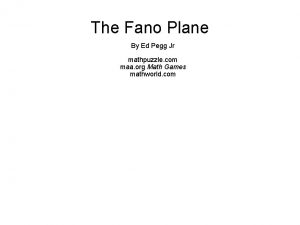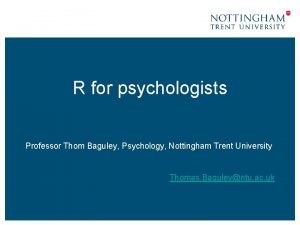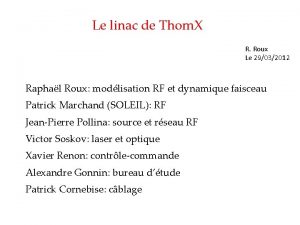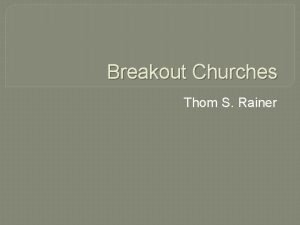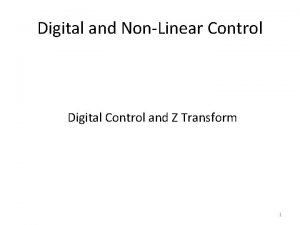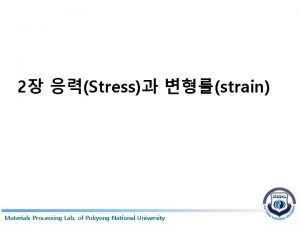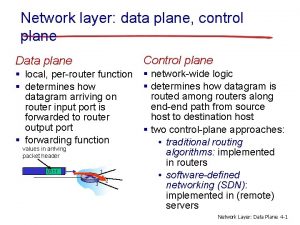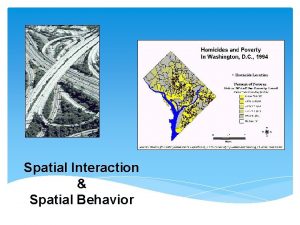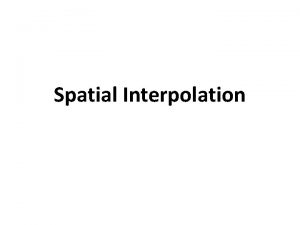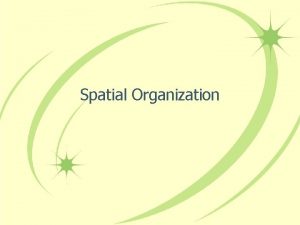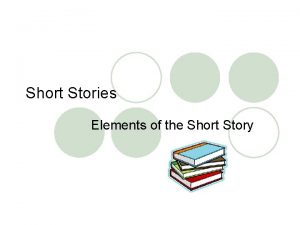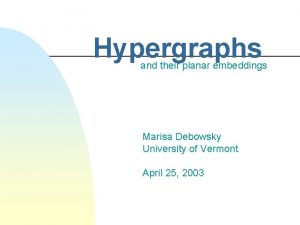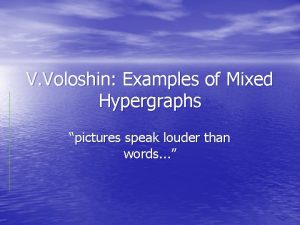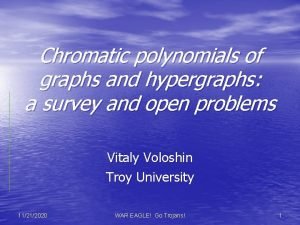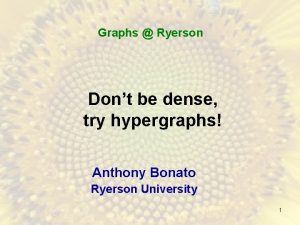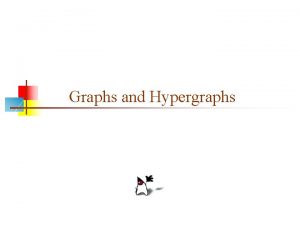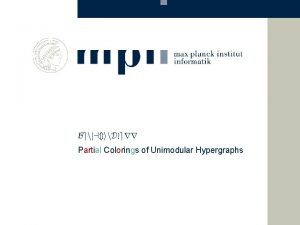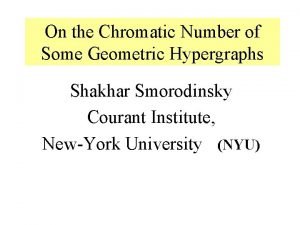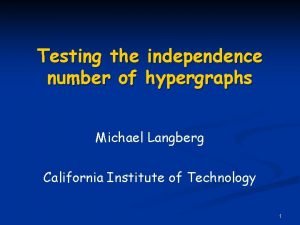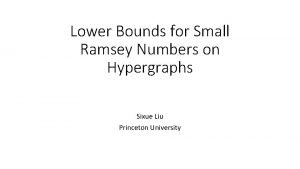Short Plane Supports for Spatial Hypergraphs Thom Castermans















![Results Support |S| Existence Length Minimization Tree 2 P [Bereg et al 2014] NP-hard Results Support |S| Existence Length Minimization Tree 2 P [Bereg et al 2014] NP-hard](https://slidetodoc.com/presentation_image/0342326b54ec6f230b224cb19dc06a36/image-16.jpg)


























- Slides: 42

Short Plane Supports for Spatial Hypergraphs Thom Castermans Mereke van Garderen Wouter Meulemans Martin Nöllenburg Xiaoru Yuan

A hypergraph H = (V, S) where S contains hyperedges which are subsets of V

Drawing a hypergraph Hyperedge as polygon containing its members (Gestalt theory)

Drawing a hypergraph Hyperedge as lines connecting its members (Tufte’s minimal ink)

Support graphs A support graph G = (V, E) of a hypergraph H = (V, S) G uses the same vertices as H Each hyperedge in S induces a connected subgraph in G

Criteria

Criteria Short total edge length

Criteria Short total edge length Planar

Criteria Short total edge length Planar Kelp-style rendering [Dinkla et al 2012, Meulemans et al 2013]

Criteria Short total edge length Planar

Criteria Short total edge length Planar Possibly a tree

Known results on plane supports Support |S| Tree 2 3+ Graph 2 3+ Existence Length Minimization

Known results on plane supports Support |S| Existence Tree 2 P [Bereg et al 2014] Length Minimization 3+ Graph 2 P [Bereg et al 2014] 3+ NP-hard [Buchin et al 2011]

Related work Nonplanar Existence of support trees in P Length Min for 2 hyperedges in P Length Min NP-hard for 3 hyperedges Combinatorial Existence is NP-hard for many hyperedges Variants Hamiltonian induced subgraphs Steiner setting of disjoint hyperedges Stricter planarity than supports [Klemz et al 2014] [Hurtado et al 2018] [Akitaya et al, 2016] [Buchin et al 2011] [Brandes et al 2010] [Bereg et al 2015] [Van Goethem et al 2018]

Results We study plane support trees (and graphs) Existence A simple sufficient condition Length minimization Why simple ideas do not lead to an approximation algorithm Computational complexity Integer linear program Two heuristic approaches Experiments
![Results Support S Existence Length Minimization Tree 2 P Bereg et al 2014 NPhard Results Support |S| Existence Length Minimization Tree 2 P [Bereg et al 2014] NP-hard](https://slidetodoc.com/presentation_image/0342326b54ec6f230b224cb19dc06a36/image-16.jpg)
Results Support |S| Existence Length Minimization Tree 2 P [Bereg et al 2014] NP-hard yes NP-hard 3+ Sufficient condition NP-hard 2 P [Bereg et al 2014] NP-hard yes NP-hard [Buchin et al 2011] Graph 3+

A sufficient condition

A sufficient condition

Improving the length

Can we use this?

Can we use this?

Can we use this?

Can we use this?

The computational problem Given H = (V, S) and L > 0, is there a plane support tree with total length at most L? This is NP-hard, via a reduction from planar monotone 3 -SAT. a or b or d b or c or d a b c not a or not c or not d d

The computational problem Given H = (V, S) and L > 0, is there a plane support tree with total length at most L? This is NP-hard, via a reduction from planar monotone 3 -SAT. a or b or d b or c or d b c not a or not c or not d d

The computational problem Given H = (V, S) and L > 0, is there a plane support tree with total length at most L? This is NP-hard, via a reduction from planar monotone 3 -SAT. a or b or d b or c or d b c not a or not c or not d d

The computational problem Given H = (V, S) and L > 0, is there a plane support tree with total length at most L? This is NP-hard, via a reduction from planar monotone 3 -SAT. a or b or d b or c or d b c not a or not c or not d d

The computational problem Given H = (V, S) and L > 0, is there a plane support tree with total length at most L? This is NP-hard, via a reduction from planar monotone 3 -SAT. a or b or d b or c or d not a or not c or not d

The computational problem Given H = (V, S) and L > 0, is there a plane support tree with total length at most L? This is NP-hard, via a reduction from planar monotone 3 -SAT. b or c or d not a or not c or not d

The computational problem Given H = (V, S) and L > 0, is there a plane support tree with total length at most L? This is NP-hard, via a reduction from planar monotone 3 -SAT.

The computational problem Given H = (V, S) and L > 0, is there a plane support tree with total length at most L? This is NP-hard, via a reduction from planar monotone 3 -SAT.

The computational problem Given H = (V, S) and L > 0, is there a plane support tree with total length at most L? This is NP-hard, via a reduction from planar monotone 3 -SAT.

Heuristics • • MST Iteration Local. Search (hill climbing)

Heuristics • • MST Iteration Local. Search (hill climbing)

Heuristics • • MST Iteration Local. Search (hill climbing)

Generating random hypergrahs Number of vertices: Number of hyperedges: Degree distribution: n k d EVEN HIGH LOW MID

Experiments: heuristics comparisons n = 20, 40, 60, 80, 100 k = 2, 3, 4, 5, 6, 7 d = EVEN, LOW, MID, HIGH 1000 random hypergraphs MST Approximation ; MST Iteration ; Local. Search U / T / PT 1. 2. MST Iteration better than MST Approximation for higher k. MID and EVEN benefit more from iteration than LOW and HIGH. 3. 4. Local. Search is on average 12% shorter than MST Iteration. Requiring planarity affects LOW and MID. 5. 6. MST Iteration is on average 95. 11% faster than Local. Search U. Requiring planarity makes Local. Search on average 272. 64% slower, 354. 06% for n = 100.

Experiments: optimality comparisons n = 10, 15, 20 k = 2, 3 d = LOW, MID 1000 random hypergraphs Local. Search U / T / PT ; OPT U / T / PT 1. 2. Local. Search T is always optimal. Local. Search is close to optimal: ratio less than 1. 61 in all cases, ratio less than 1. 2 in 99% of the cases.

Theoretical results We study plane support trees (and graphs). Existence A vertex that is in all hyperedges ensures a plane support tree. Length minimization EMST on common vertices is not always part of an o(n)-approximation. Deciding whether a plane support exists is NP-hard. n Two hyperedges, one containing the other n Integer linear program

Experimental results Heuristics: MST Iteration and Local. Search • MST Iteration is fast • Local. Search is close to optimal • Having a nonplanar tree is always optimal

Future work Can we efficiently decide whether a plane support tree exists? (We know this only for k = 2. ) How many iterations are needed for MST Iteration with k > 2 before the solution stabilizes? What is the effect of initializing Local. Search with MST Iteration? Do other search techniques (e. g. simulated annealing) work better? Explore real-world data.

Short Plane Supports for Spatial Hypergraphs Thom Castermans Mereke van Garderen Wouter Meulemans Martin Nöllenburg Xiaoru Yuan
 Tall + short h
Tall + short h Data plane control plane and management plane
Data plane control plane and management plane Oflinemaps
Oflinemaps Ed pegg jr
Ed pegg jr Thom baguley
Thom baguley Bài hát ngoài đồng lúa chín thơm
Bài hát ngoài đồng lúa chín thơm Thom 2scm
Thom 2scm From the wave by thom gunn answer key
From the wave by thom gunn answer key Thom geurts
Thom geurts Dusseldorf 28 november
Dusseldorf 28 november Breakout churches thom rainer
Breakout churches thom rainer Contoh seni bina kerajaan alam melayu
Contoh seni bina kerajaan alam melayu Digital control
Digital control 체적변형률
체적변형률 Forwarding equivalence classes
Forwarding equivalence classes Särskild löneskatt för pensionskostnader
Särskild löneskatt för pensionskostnader Toppslätskivling effekt
Toppslätskivling effekt Frger
Frger Elektronik för barn
Elektronik för barn Borra hål för knoppar
Borra hål för knoppar Mat för unga idrottare
Mat för unga idrottare Smärtskolan kunskap för livet
Smärtskolan kunskap för livet Jiddisch
Jiddisch Ledarskapsteorier
Ledarskapsteorier Bris för vuxna
Bris för vuxna Humanitr
Humanitr Datorkunskap för nybörjare
Datorkunskap för nybörjare Steg för steg rita
Steg för steg rita Trög för kemist
Trög för kemist Returpilarna
Returpilarna Redogör för vad psykologi är
Redogör för vad psykologi är Bästa kameran för astrofoto
Bästa kameran för astrofoto Fri form dikt
Fri form dikt Nyckelkompetenser för livslångt lärande
Nyckelkompetenser för livslångt lärande Publik sektor
Publik sektor Lek med geometriska former
Lek med geometriska former Klädsel i rom
Klädsel i rom Personlig tidbok
Personlig tidbok Iso 22301 utbildning
Iso 22301 utbildning Vilken grundregel finns det för tronföljden i sverige?
Vilken grundregel finns det för tronföljden i sverige? Verktyg för automatisering av utbetalningar
Verktyg för automatisering av utbetalningar Ministerstyre för och nackdelar
Ministerstyre för och nackdelar Kanaans land
Kanaans land



